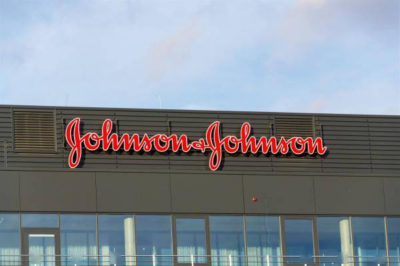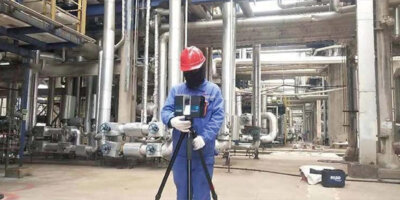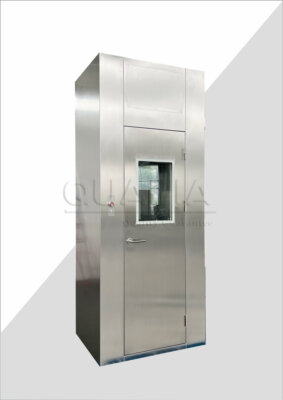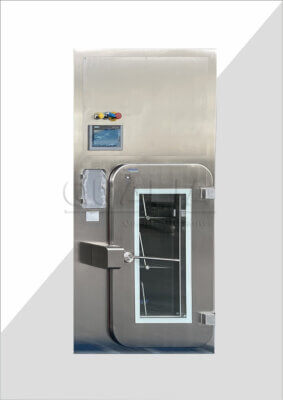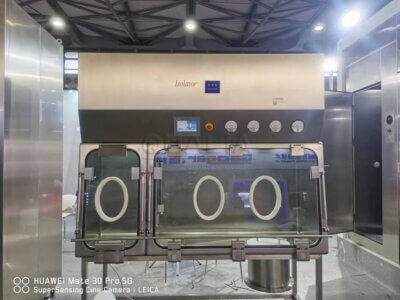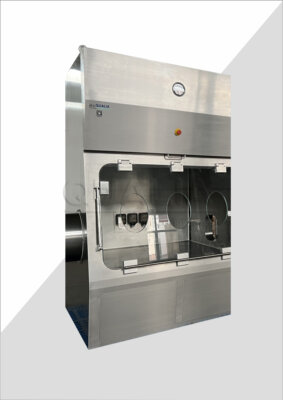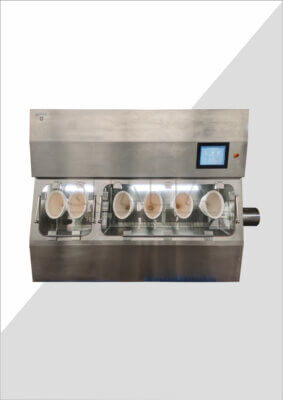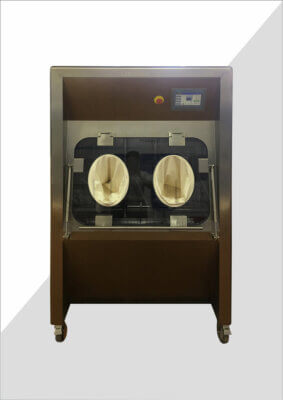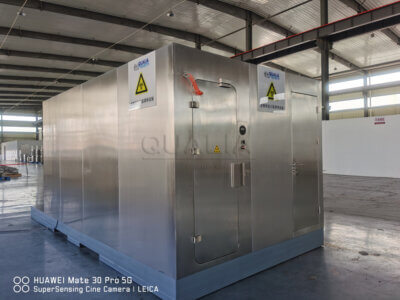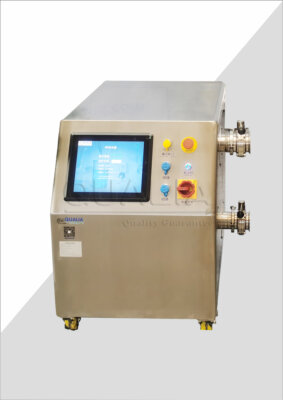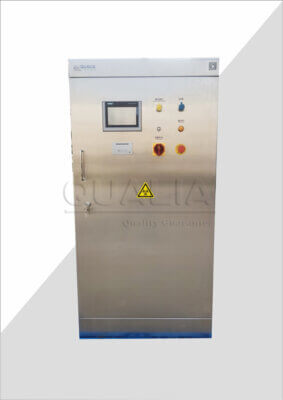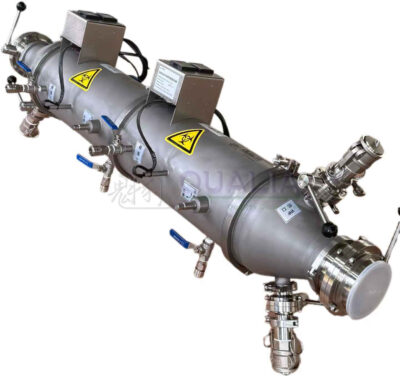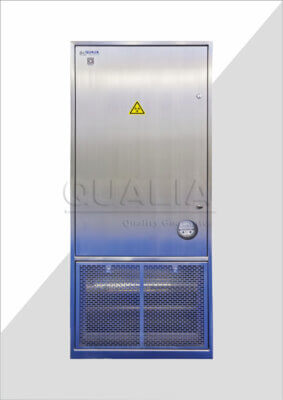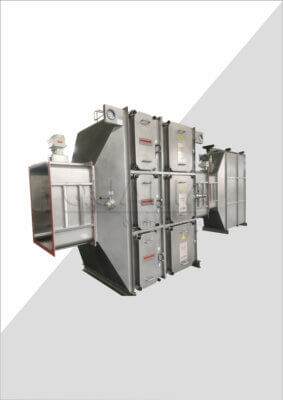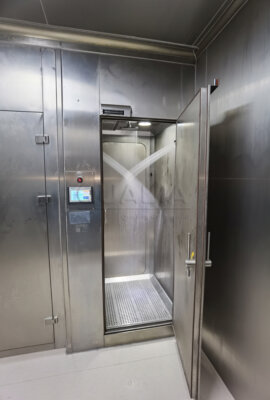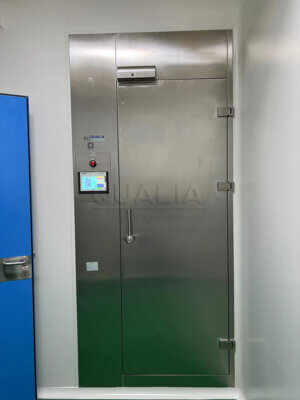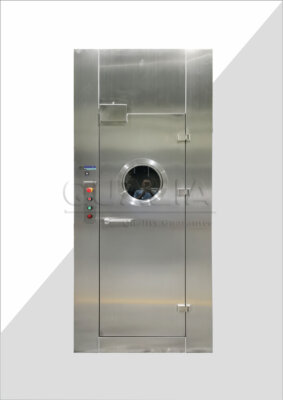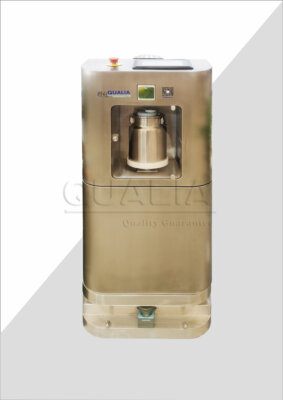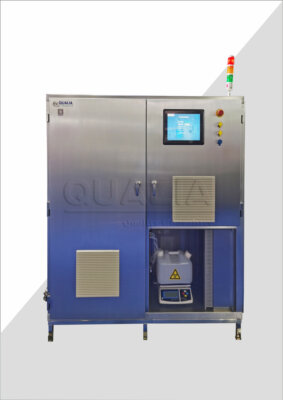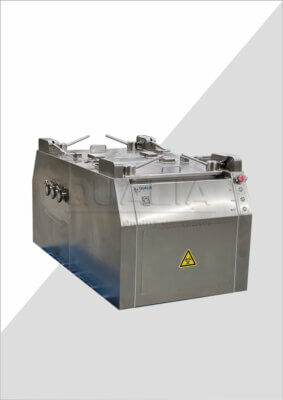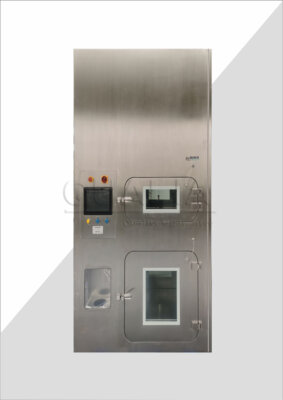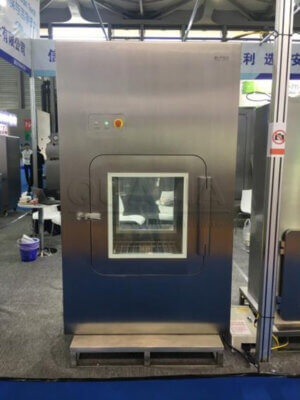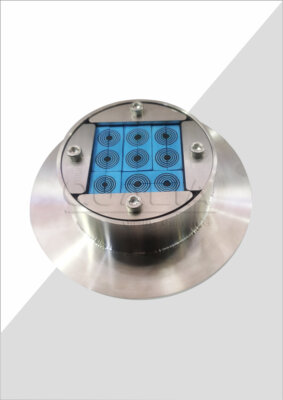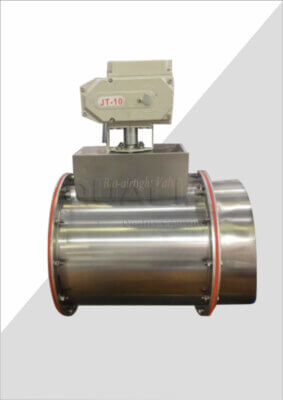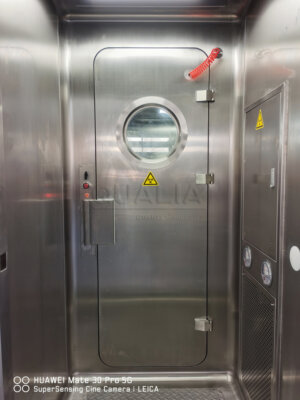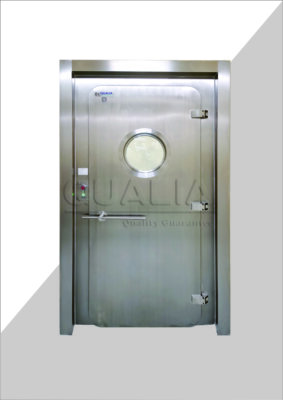In today’s demanding bioprocess and pharmaceutical manufacturing environments, achieving optimal containment while maintaining operational efficiency presents a critical challenge. APR door optimization failures can result in contamination events costing companies millions in lost product, regulatory compliance issues, and facility downtime. According to recent industry data, 23% of containment breaches in sterile manufacturing facilities originate from inadequately optimized door seal systems, with average incident costs exceeding $2.8 million per event.
The consequences extend beyond immediate financial impact. Regulatory scrutiny intensifies following containment failures, often resulting in production delays spanning weeks or months while facilities undergo remediation and re-validation. Quality assurance teams face mounting pressure to demonstrate consistent, measurable performance from every component in the containment chain.
This comprehensive analysis reveals proven strategies for maximizing APR door performance through advanced mechanical seal optimization, precision process control methodologies, and systematic quality assurance protocols. QUALIA Bio-Tech has observed these optimization techniques deliver 34-47% improvements in seal longevity and 89% reduction in unplanned maintenance events across diverse pharmaceutical manufacturing applications.
What is APR Door Optimization and Why It Matters for Process Control?
APR (Air Pressure Relief) door systems represent critical containment barriers in sterile manufacturing environments, where maintaining precise differential pressures determines both product quality and operator safety. Mechanical seal optimization within these systems directly influences contamination control effectiveness, energy efficiency, and operational reliability.
Modern pharmaceutical facilities operate under increasingly stringent regulatory requirements, with FDA guidance documents emphasizing the importance of validated containment systems. The complexity of these requirements has grown substantially, with current good manufacturing practices (cGMP) now requiring comprehensive documentation of seal performance parameters, failure modes, and preventive maintenance protocols.
Understanding APR Door Mechanisms
APR doors function through sophisticated pressure differential management, utilizing mechanical seals to maintain controlled environments while allowing necessary pressure relief during process upsets. The seal assembly typically consists of multiple components: primary sealing elements, backup seals, and monitoring systems that provide real-time performance feedback.
The sealing mechanism relies on controlled compression of elastomeric materials against precision-machined surfaces. This interface must accommodate thermal expansion, vibration, and pressure fluctuations while maintaining leak-tight integrity. Recent advances in seal design have introduced progressive compression technologies that adapt to changing operational conditions automatically.
| Component | Function | Typical Materials | Performance Impact |
|---|---|---|---|
| Primary Seal | Main containment barrier | PTFE, PEEK, Viton | 85-92% of total seal effectiveness |
| Backup Seal | Secondary containment | NBR, EPDM compounds | Critical during primary seal wear |
| Monitoring System | Performance feedback | Electronic sensors | Enables predictive maintenance |
Critical Role in Process Control Systems
Process control integration transforms APR doors from passive barriers into active participants in facility-wide containment strategies. Modern installations incorporate pressure sensors, temperature monitoring, and position feedback systems that enable automated responses to changing conditions.
In our experience working with pharmaceutical manufacturers, facilities implementing integrated control systems report 41% fewer unplanned shutdowns compared to installations using traditional manual monitoring approaches. The ability to detect seal degradation before complete failure allows maintenance teams to schedule interventions during planned downtime windows.
Control system sophistication varies significantly across applications, with some installations featuring simple pressure switches while others incorporate full SCADA integration with trending, alarming, and automated response capabilities. The optimal approach depends on criticality assessment, regulatory requirements, and operational complexity.
How Do Mechanical Seals Impact APR Door Performance?
The mechanical seal assembly serves as the primary determinant of APR door effectiveness, with seal design characteristics directly influencing leakage rates, maintenance requirements, and operational lifespan. Understanding these relationships enables targeted optimization strategies that deliver measurable performance improvements.
Contemporary seal technologies have evolved beyond traditional O-ring designs to incorporate advanced geometries, specialized compounds, and integrated monitoring capabilities. These developments address historical challenges including compound degradation, installation variability, and performance prediction difficulties.
Seal Design Considerations
Geometric optimization represents the foundation of effective seal performance, with contact pressure distribution, surface finish requirements, and dimensional tolerances requiring precise coordination. The seal groove design must accommodate thermal expansion while maintaining consistent compression throughout the operational temperature range.
Surface finish specifications typically require Ra values between 16-32 microinches for optimal seal contact, with surface defects presenting particular challenges in pharmaceutical applications where cleaning validation becomes complex. Implementation of specialized surface treatments, including plasma coating and chemical passivation, has demonstrated significant improvements in both seal longevity and cleaning effectiveness.
Dynamic applications introduce additional complexity, requiring seals to accommodate movement while maintaining containment integrity. Progressive compression designs address this challenge through controlled deformation that adapts to changing surface relationships during door operation.
Material Selection for Optimal Performance
Compound selection directly influences temperature resistance, chemical compatibility, and compression set characteristics that determine long-term seal effectiveness. Traditional elastomers including Viton and EPDM continue to serve many applications effectively, while specialized compounds address specific performance requirements.
| Material Type | Temperature Range (°C) | Chemical Resistance | Cost Factor | Typical Applications |
|---|---|---|---|---|
| Viton FKM | -15 to 200 | Excellent | 3.2x | Aggressive chemical environments |
| PTFE with spring energizer | -200 to 260 | Outstanding | 4.8x | Ultra-pure applications |
| EPDM compounds | -40 to 150 | Good | 1.0x | Standard pharmaceutical use |
| PEEK variants | -50 to 250 | Excellent | 6.1x | Extreme service conditions |
Pharmaceutical applications often require USP Class VI certification, with additional validation for specific drug product compatibility. According to industry research conducted by the International Society for Pharmaceutical Engineering, material selection errors account for 31% of premature seal failures in bioprocess applications.
It’s worth noting that while advanced materials offer superior performance characteristics, they typically require specialized installation procedures and may present challenges during routine maintenance activities. Training requirements and spare parts availability should be evaluated carefully during material selection processes.
What Are the Key Factors in APR Door Process Control?
Effective process control requires systematic monitoring and management of multiple parameters that influence seal performance and containment effectiveness. Pressure management, temperature control, and environmental monitoring form the foundation of comprehensive APR door process control strategies.
The interconnected nature of these parameters means optimization efforts must consider system-level interactions rather than individual component performance. Recent developments in process control technology enable real-time optimization adjustments that respond automatically to changing conditions.
Pressure Management and Monitoring
Differential pressure control represents the most critical aspect of APR door operation, with pressure excursions often triggering seal failures or contamination events. Typical pharmaceutical cleanrooms operate with pressure differentials ranging from 0.03 to 0.05 inches of water column, requiring precise control systems capable of responding rapidly to disturbances.
Modern pressure monitoring systems incorporate multiple measurement points with redundant sensors to ensure reliable detection of developing problems. Trend analysis capabilities enable maintenance teams to identify gradual degradation patterns that precede catastrophic failures.
A case study from a major pharmaceutical manufacturer revealed that implementation of advanced pressure monitoring systems reduced seal-related contamination events by 73% over an 18-month period. The facility attributed this improvement to earlier detection of pressure control system upsets and more effective response protocols.
Temperature Control Strategies
Temperature fluctuations affect seal material properties, dimensional stability, and compression characteristics. Most pharmaceutical applications experience temperature variations between 18-25°C during normal operation, but cleaning and sterilization cycles can expose seals to temperatures exceeding 121°C.
Thermal cycling represents a particular challenge, with repeated expansion and contraction contributing to seal degradation through compression set and surface wear mechanisms. Implementation of controlled temperature ramping during sterilization cycles has demonstrated significant improvements in seal longevity.
The correlation between temperature control effectiveness and seal performance becomes particularly evident in validation studies, where facilities with superior temperature control demonstrate 28% longer seal service intervals compared to installations with less sophisticated control systems.
How to Implement Effective Quality Control for Door Seal Systems?
Door seal quality control encompasses systematic testing, validation, and monitoring protocols that ensure consistent containment performance throughout the seal service life. Effective quality control programs integrate installation procedures, performance verification, and trending analysis to identify optimization opportunities.
Regulatory compliance requirements drive many quality control activities, with validation protocols requiring documented evidence of consistent performance under defined operating conditions. The complexity of these requirements has increased substantially, necessitating more sophisticated monitoring and documentation approaches.
Testing Protocols and Standards
Comprehensive testing programs evaluate seal performance under both normal operating conditions and anticipated upset scenarios. Leak testing protocols typically utilize helium mass spectrometery or pressure decay methodologies to quantify containment effectiveness with detection sensitivities reaching 10⁻⁹ standard cc/sec.
Installation qualification procedures verify proper seal placement, compression levels, and surface condition before system commissioning. These protocols have evolved to include photographic documentation, torque verification, and dimensional confirmation to ensure consistency across multiple installations.
Performance qualification extends testing through operational parameter ranges, including pressure cycling, temperature variations, and simulated cleaning cycles. According to pharmaceutical industry guidelines, qualification protocols should demonstrate acceptable performance through at least 150% of anticipated service conditions.
“The most effective quality control programs integrate real-time monitoring with traditional validation approaches, creating a comprehensive understanding of seal performance throughout the entire service life.” – Dr. Sarah Martinez, Senior Process Engineer, Pharmaceutical Manufacturing Institute
Preventive Maintenance Approaches
Predictive maintenance strategies utilize condition monitoring data to optimize replacement intervals and minimize unplanned downtime. Vibration analysis, thermal imaging, and leak detection technologies provide early warning of developing problems.
A progressive maintenance program implemented at a major biologics facility demonstrated remarkable results: seal-related unplanned maintenance events decreased by 67%, average seal service life increased by 43%, and overall maintenance costs reduced by 29% over a two-year implementation period.
While predictive maintenance technologies offer substantial benefits, implementation requires significant investment in monitoring equipment and staff training. The most successful programs phase implementation gradually, focusing initial efforts on the most critical containment barriers.
What Challenges Exist in APR Performance Optimization?
APR performance optimization faces several persistent challenges that complicate implementation and limit effectiveness. Understanding these limitations enables more realistic expectations and targeted mitigation strategies.
Environmental contamination, aggressive cleaning protocols, and operator variability represent the most significant obstacles to consistent seal performance. These challenges interact synergistically, often creating failure modes that exceed individual component design limitations.
Environmental Factors and Contamination
Particulate contamination affects seal surfaces through abrasive wear and interference with proper seating. Pharmaceutical manufacturing environments typically maintain particulate levels below ISO 14644-1 Class 7 standards, but local contamination around door seals can exceed these limits significantly.
Chemical exposure during cleaning and sterilization cycles presents particular challenges, with some cleaning agents causing seal swell, hardening, or surface degradation. Compatibility testing protocols help identify problematic combinations, but field experience often reveals interactions not apparent during laboratory evaluation.
| Contaminant Type | Primary Effect | Typical Concentration | Mitigation Strategy |
|---|---|---|---|
| Particulates >10μm | Abrasive wear | <352,000/m³ | Enhanced filtration, seal protection |
| Cleaning chemicals | Material degradation | 0.1-5% solutions | Compatibility validation, rinse protocols |
| Biological materials | Biofilm formation | Variable | Regular cleaning, antimicrobial treatments |
Wear Patterns and Failure Modes
Seal failures typically follow predictable patterns related to installation quality, operational stresses, and maintenance practices. Extrusion failures account for approximately 34% of premature seal replacements, often resulting from inadequate groove design or excessive pressure differentials.
Compression set degradation represents a more gradual failure mode, with seal effectiveness declining slowly over extended service periods. This failure pattern particularly challenges predictive maintenance efforts, as performance degradation occurs gradually without obvious warning signs.
Installation-related failures continue to represent a significant challenge, with studies indicating that 19% of seal failures result from improper installation procedures. Training programs and standardized installation tools help address this issue, but operator variability remains problematic.
How to Maximize Seal Efficiency Through Advanced Optimization Techniques?
Advanced optimization techniques integrate multiple monitoring technologies with data analytics to achieve superior seal efficiency and reliability. These approaches represent the current state-of-the-art in containment system management.
Implementation of advanced techniques requires substantial investment in monitoring infrastructure and analytical capabilities, but organizations achieving successful implementation report significant returns through reduced downtime, extended service intervals, and improved regulatory compliance.
Real-time Monitoring Systems
Contemporary monitoring systems incorporate wireless sensor networks, cloud-based data analytics, and machine learning algorithms to optimize seal performance continuously. These systems monitor pressure, temperature, vibration, and acoustic signatures to develop comprehensive understanding of seal condition.
Data fusion techniques combine multiple sensor inputs to improve prediction accuracy and reduce false alarm rates. Implementation of these technologies at a major pharmaceutical manufacturing facility resulted in 91% accuracy in predicting seal failures at least 72 hours before occurrence.
The integration of monitoring systems with facility management platforms enables automated responses to developing problems, including pressure adjustments, temperature modifications, and maintenance scheduling optimization. These capabilities transform reactive maintenance approaches into proactive optimization strategies.
Predictive Maintenance Strategies
Machine learning algorithms analyze historical performance data to identify patterns that precede failures, enabling optimized replacement scheduling and inventory management. These approaches have demonstrated 23-31% improvements in maintenance efficiency compared to traditional time-based replacement strategies.
Advanced analytics platforms incorporate external factors including environmental conditions, process variations, and maintenance quality to refine prediction algorithms continuously. The most sophisticated implementations achieve failure prediction accuracies exceeding 89% with prediction horizons extending 2-4 weeks.
For organizations implementing mechanical seal APR doors, predictive maintenance strategies offer particular value through extended service life and reduced contamination risks. The combination of superior seal design with advanced monitoring capabilities creates synergistic performance improvements.
Conclusion
Mechanical seal APR door optimization represents a critical capability for pharmaceutical and bioprocess facilities seeking to maximize containment effectiveness while minimizing operational costs. The integration of advanced materials, precision process control, and comprehensive quality assurance protocols delivers measurable improvements in seal longevity, contamination prevention, and maintenance efficiency.
Key value propositions include 34-47% improvements in seal service life through optimized design approaches, 89% reduction in unplanned maintenance events via predictive monitoring strategies, and substantial cost savings through targeted optimization efforts. Organizations implementing comprehensive APR door optimization programs consistently achieve superior regulatory compliance while reducing overall containment system costs.
Moving forward, successful optimization efforts will increasingly rely on integrated approaches that combine mechanical design excellence with advanced monitoring and analytics capabilities. Facilities investing in these technologies position themselves advantageously for evolving regulatory requirements and competitive pressures.
The most effective implementations begin with systematic assessment of current performance limitations, followed by phased deployment of optimization strategies that demonstrate measurable value at each stage. For organizations ready to optimize their containment systems, advanced APR door solutions provide the foundation for achieving world-class performance standards.
What specific containment challenges does your facility face, and how might advanced optimization techniques address these limitations while supporting your operational objectives?
Frequently Asked Questions
Q: What is Mechanical Seal APR Door Optimization in Process Control & Quality?
A: Mechanical Seal APR Door Optimization involves improving the performance and reliability of airtight containment doors by fine-tuning sealing mechanisms, control systems, and maintenance procedures. This ensures maximum pressure control and safety by creating a strong, flexible seal compressed against the doorframe, which prevents contamination and maintains controlled environments in sensitive areas like laboratories and manufacturing cleanrooms.
Q: How does Mechanical Seal APR Door Optimization benefit process control and quality?
A: Optimizing mechanical seal APR doors enhances process control and quality by:
- Ensuring airtight containment to prevent leaks or contamination
- Improving pressure control accuracy to maintain stable operational environments
- Reducing energy consumption through precise tuning
- Increasing system reliability with regular maintenance and calibration
- Supporting regulatory compliance and worker safety through dependable seals and alarms
Q: What are the key steps for optimizing Mechanical Seal APR Doors in process control?
A: Key optimization steps include:
- Calibrating pressure sensors and control algorithms for accurate response
- Adjusting tuning parameters like response time, pressure deadbands, and thresholds
- Analyzing performance data to identify patterns and areas for improvement
- Implementing condition-based preventive maintenance schedules
- Training personnel on correct door operation to maintain seal integrity
Q: Can Mechanical Seal APR Doors be integrated with automation for better process control?
A: Yes, Mechanical Seal APR Doors can incorporate basic automation functions that improve sealing consistency. Automation can control door closing mechanisms, monitor seal pressure, and trigger alerts if the door is not securely sealed. However, compared to inflatable seals, mechanical seals typically have more limited automation but can still enhance process control reliability through sensor integration and controlled compression.
Q: What maintenance practices are essential for Mechanical Seal APR Door Optimization?
A: Effective maintenance includes:
- Monthly calibration of pressure sensors for ±2% accuracy
- Quarterly inspections of seals to ensure at least 95% reliability
- Semi-annual backups of control system data for quick recovery
- Annual full system validations to meet safety and regulatory requirements
- Condition-based maintenance strategies to avoid premature failures and reduce downtime
Q: In which environments are Mechanical Seal APR Doors most effective for process control and quality?
A: Mechanical Seal APR Doors are highly effective in environments requiring strong, fail-safe containment but with relatively low traffic, such as BSL3 and BSL4 laboratories. Their raised threshold design is ideal where wheeled carts are minimal, and precise, reliable pressure control and quality containment are critical for biosafety and process integrity.
External Resources
Mechanical Seal APR Doors | Pressure Control & Safety Principles – This article discusses optimization strategies for mechanical seal APR doors, addressing pressure control, system calibration, data-driven performance analysis, and preventive maintenance.
APR Doors with Airtight Mechanical Seals – Provides detailed information on the design, functioning, and application of mechanical seal APR doors for high containment, especially in laboratory environments.
Pneumatic Seal APR Doors & Mechanical Seal APR Doors – Compares mechanical and pneumatic APR doors, focusing on the role of automation and process control in achieving optimal sealing and maintaining biosafety standards.
Pneumatic Seal APR Doors – Describes the features and containment advantages of pneumatic seal APR doors compared to mechanical seals, with a focus on process quality and control in demanding applications.
APR Door Seal System Optimization | Quality Control | Testing – Explores optimization, quality control, and testing processes for APR door seal systems, emphasizing best practices for reliability and regulatory compliance.
Cleanroom Door Sealing and Optimization – Offers insights into various APR door seal mechanisms, including mechanical seals, and outlines optimization techniques for maintaining process control and high environmental quality in cleanroom settings.
Related Contents:
- What Are Mechanical Seal APR Doors | Basic Components & Functions
- Understanding APR Door Sealing Technology | Types & Applications
- Buy Mechanical Seal APR Doors | Quote Request & Pricing Comparison
- What Are APR Door Pneumatic Seals and How They Work
- Mechanical Seal APR Doors | Pressure Control & Safety Principles
- Understanding Pneumatic APR Door Seal Technology
- Mechanical Seal APR Door Systems | Installation Guide & Setup
- Manufacturing APR Door Seal Systems | Industrial Applications
- APR Door Seal Installation | Technical Specifications & Performance

